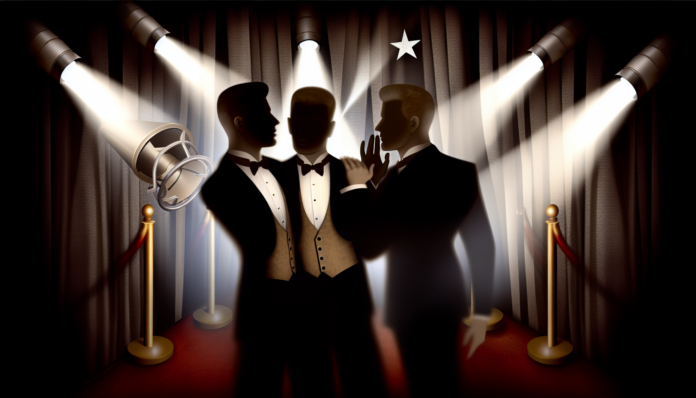Behind the Silver Screen: Unraveling the Mystery of Cary Grant and Randolph Scott’s Alleged Affair
Introduction
In the golden age of Hollywood, few names spark intrigue and fascination like Cary Grant and Randolph Scott. Both were iconic figures of the 1930s and 1940s, revered for their charm and rugged good looks. While Grant was known for his suave leading roles in romantic comedies, Scott carved a niche in Westerns, embodying the archetypal gallant hero. Yet, beyond their cinematic legacies, rumors have long swirled about a possible romantic relationship between the two. The potential affair captured public imagination and raised eyebrows in a time when upholding conservative social norms was paramount.
The 1930s and 1940s represented an era in America marked by stringent mores regarding sexuality and the traditional roles of men and women. Homosexuality was largely undisclosed, and any transgressions against societal norms could result in ostracism or worse. When whispers of Grant and Scott’s close companionship emerged, Hollywood was still a place where closeness was often interpreted through a heteronormative lens.
The Scandal
The contours of this story arguably began to take shape when Grant and Scott became roommates in the early 1930s while they were both rising stars in Hollywood. Friends and fellow actors have recounted their close bond, intimate friendships, and peculiar living arrangements. While their strong friendship, characterized by mutual support and camaraderie, has been portrayed as innocuous, it didn’t take long for rumors to surface.
One major point of intrigue surrounded their shared residence in a lavish apartment, a domain filled with hints of intimacy that, at the time, were electrifying for the gossip columns. When asked about their relationship, Grant often dismissed speculation with witticisms, suggesting that the public misunderstood their affection. A notable anecdote involves actor and director George Cukor, who was known for creating close-knit relationships among actors. When he urged them to publicize their relationship intelligently, Grant allegedly laughed it off, perhaps hinting at a knowledge of the implications tied to such revelations.
Despite these denials, sources from within the Hollywood milieu were quick to amplify the narrative. Journalist Hedda Hopper, known for her gossip columns, played a key role in disseminating rumors, often hinting at the suggestive nature of their companionship without directly accusing them of anything. The ambiguity fueled public fascination, demonstrating that Hollywood was fertile ground for speculation and sensationalism.
Moral and Cultural Analysis
The societal reaction at the time was mixed. Many fans lauded Grant and Scott for their cinematic prowess, yet the encroaching specter of scandal lingered ominously. Hollywood’s studio system was laden with machinations designed to protect the images of its leading men. The alleged affair was substantial enough that it could threaten their careers, similar to the plights faced by other actors who fell victim to the rumor mill.
Though the whispers about Grant and Scott’s romantic entanglement never quite blossomed into a full-blown scandal, they do reflect the prevailing attitudes of the time. Homosexuality was cloaked in stigma, and an alleged relationship between two prominent male stars would have been untenable in the cultural landscape of the day. It suggested a rift between public persona and private life, a contradiction that many stars faced amid Hollywood’s moral frameworks.
Fast forward to today, the narrative would likely be received with markedly different perspectives. In a cultural climate that champions diversity and inclusivity, the relationship could be embraced rather than vilified. With LGBTQ+ representation becoming more mainstream and accepted, speculation around Grant and Scott’s bond might celebrate their love and companionship instead of using it as fodder for scandal.
While the full extent of their relationship remains a matter of conjecture, the story of Cary Grant and Randolph Scott illustrates not just the complexities of personal identities hidden behind the silver screen but also reflects a broader societal evolution concerning sexual orientation and acceptance over the decades.

